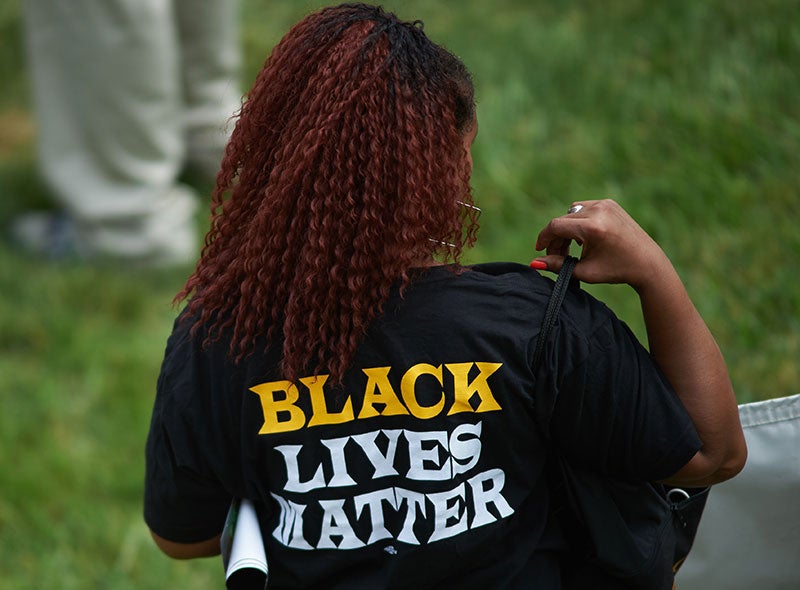
A group of Seattle, Washington, teachers are leading by example in the fight against racial inequality.
The local Seattle school district currently has one of the largest opportunity gaps between Black and white students in the country, but their educators are looking to change that. “We know, as educators, that we need to show our kids that we believe in them, and we set high expectations for them,” Seattle Education Association president Phyllis Campano told ABC News on Thursday. “It’s not really about Black Lives Matter as a movement, but about how black lives matter in our schools.
To make sure the district’s African-American students know just how much their teachers believe in them, nearly 2,000 educators across 80 schools in the district showed up for work on Wednesday morning wearing “Black Lives Matter” t-shirts. One group of teachers later posed for a photo while wearing their shirts.
Thousands of Seattle Teachers Wear ‘Black Lives Matter’ Shirts https://t.co/myyzLaolqD #tcot #PJNET pic.twitter.com/PGam3LPwGx
— Deneen Borelli (@deneenborelli) October 21, 2016
Subscribe to our daily newsletter for the latest in hair, beauty, style and celebrity news.
The snapshot soon turned into a viral social media moment that ushered in an overwhelming amount of positive feedback. Campano is hopeful that the gesture will lead to a larger conversation on a national scale. “The t-shirts were a catalyst to the conversation,” she continued. “And the conversation in our schools is how do we make education better for our children of color? It should be a national conversation.”
In addition to showing their support through the shirts, several schools in the district also facilitated after-school programs where students could come to discuss issues relating to racism and civil rights. For Campano, the ultimate step towards progress is one rooted in unified effort from all schools in the district to ensure that the students of color feel just as included and celebrated as their peers.
“With our scores on education being put out there, everyone keeps saying we are failing the black kids in our community,” she added. “What do we need to do? We need to come together, we need to show support. They don’t see themselves in curriculum or the histories, and we need more educators of color. But in the meantime we need to make kids feel like they are truly included, and a part of the school.”